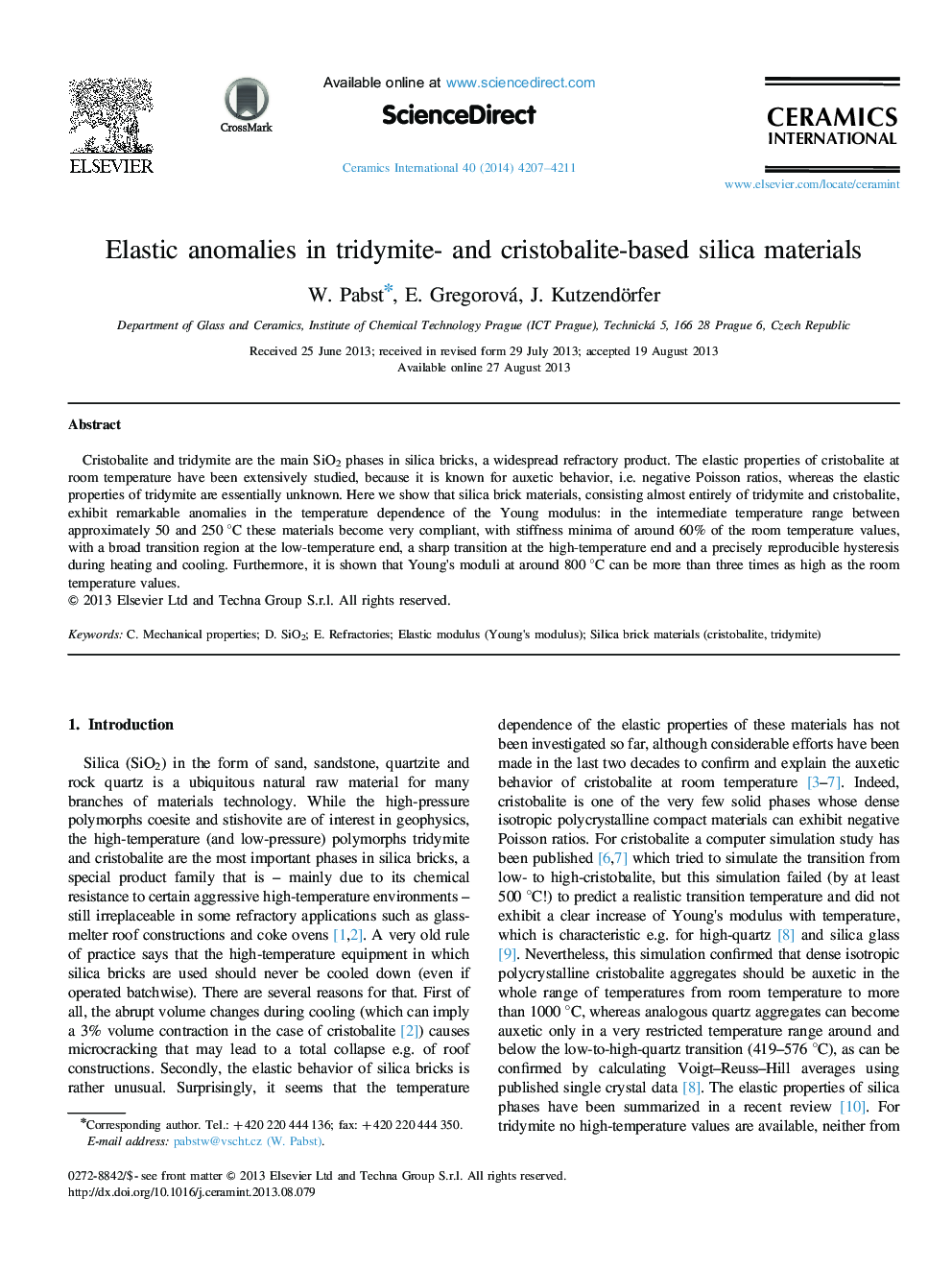| Article ID | Journal | Published Year | Pages | File Type |
|---|---|---|---|---|
| 1461442 | Ceramics International | 2014 | 5 Pages |
Cristobalite and tridymite are the main SiO2 phases in silica bricks, a widespread refractory product. The elastic properties of cristobalite at room temperature have been extensively studied, because it is known for auxetic behavior, i.e. negative Poisson ratios, whereas the elastic properties of tridymite are essentially unknown. Here we show that silica brick materials, consisting almost entirely of tridymite and cristobalite, exhibit remarkable anomalies in the temperature dependence of the Young modulus: in the intermediate temperature range between approximately 50 and 250 °C these materials become very compliant, with stiffness minima of around 60% of the room temperature values, with a broad transition region at the low-temperature end, a sharp transition at the high-temperature end and a precisely reproducible hysteresis during heating and cooling. Furthermore, it is shown that Young's moduli at around 800 °C can be more than three times as high as the room temperature values.
